Embark on a journey into the intricate realm of "complex machined parts," where precision meets innovation and engineering excellence takes center stage. In this comprehensive exploration, we'll delve into the definition, manufacturing processes, applications across industries, quality standards, material selection, market trends, and even the key players in the supply chain. Get ready to unlock the secrets behind these components that power the machinery shaping our modern world.
In the realm of manufacturing precision, complex machined parts stand as marvels of engineering. These components, characterized by intricate geometries and demanding specifications, play pivotal roles across industries. From gears with micron-level precision to intricate medical device components, the definition of complexity extends beyond the surface.
Delving deeper into the nuances, complex machined parts often involve multi-axis machining processes, where CNC (Computer Numerical Control) machines execute highly intricate designs with utmost accuracy. The demand for these parts is fueled not just by their complexity but by the critical functions they perform within various systems.
The complexity of these parts extends beyond physical dimensions. It involves tolerances measured in micrometers, intricate surface finishes, and the ability to withstand extreme conditions. A component's complexity is often a testament to the capabilities of modern manufacturing technologies.
Moreover, the choice of materials adds another layer to this complexity. Alloy selections, heat treatments, and surface coatings contribute to the overall functionality and longevity of these parts. For instance, aerospace components demand lightweight yet robust materials, while medical devices may require biocompatible materials for enhanced safety.
To truly understand the significance of complex machined parts, let's explore real-world applications. In the aerospace industry, turbine blades with precisely machined airfoils optimize engine efficiency. In healthcare, intricately machined components for diagnostic equipment showcase the fusion of precision engineering and medical technology.
As we embark on this detailed exploration, the complexity of these machined parts becomes more apparent.
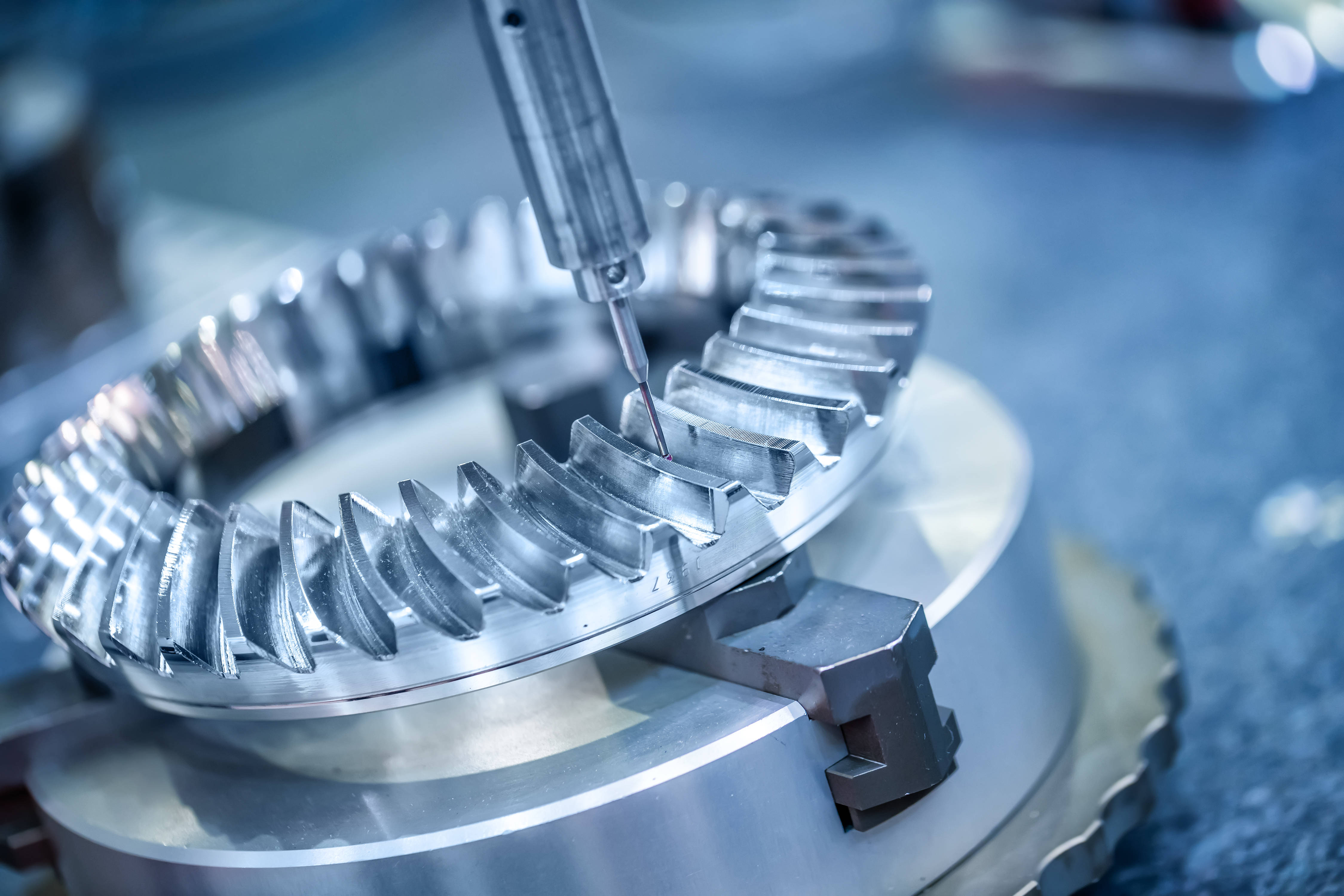
Now that we've gained a deeper understanding of the intricacies surrounding complex machined parts, let's unravel the manufacturing processes that bring these precision components to life.
The journey begins with Computer-Aided Design (CAD), where engineers translate conceptual designs into digital models. This step is critical, as it sets the foundation for the entire manufacturing process. Engineers meticulously consider factors like tolerances, material properties, and the intended application during the design phase.
Once the design is finalized, it's time for machining. Advanced machining techniques, including 5-axis CNC machining, take center stage. These machines operate with unparalleled precision, executing complex geometries with micron-level accuracy. The use of cutting-edge tools and technologies ensures that each component meets the exact specifications outlined in the design phase.
The selection of materials is a pivotal aspect of the manufacturing process. For instance, aerospace components often require lightweight alloys to meet stringent weight restrictions, while industrial machinery components may demand high-strength materials to withstand heavy loads. Material properties are carefully considered to ensure the final product's integrity and longevity.
Quality control is paramount in the production of complex machined parts. Advanced inspection tools, such as Coordinate Measuring Machines (CMMs) and non-destructive testing methods, are employed to verify the dimensional accuracy and structural integrity of each component. Continuous monitoring throughout the manufacturing process ensures that every part adheres to the highest quality standards.
The manufacturing process is not a one-time endeavor; it's an iterative refinement. Engineers often engage in a continuous improvement cycle, analyzing data from each production run to identify opportunities for enhancement. This commitment to refinement ensures that the manufacturing process evolves in tandem with technological advancements and industry best practices.
As we peel back the layers of complexity in the manufacturing process, it becomes evident that crafting these intricate components is a blend of art, precision engineering, and technological mastery.
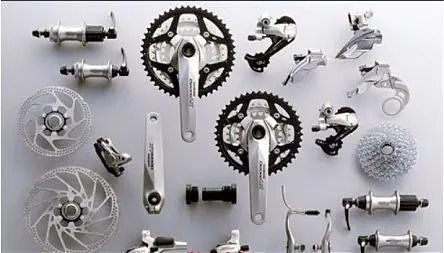
Having uncovered the meticulous manufacturing processes behind complex machined parts, let's shift our focus to the diverse applications that showcase the indispensability of these precision components across various industries.
In the aerospace sector, complex machined parts take center stage in propulsion systems, landing gear, and critical structural components. Turbine blades, intricately crafted for optimal aerodynamics, exemplify the marriage of precision engineering and aviation technology. The demand for lightweight yet durable materials underscores the vital role these components play in enhancing fuel efficiency and overall aircraft performance.
Transitioning to the automotive realm, complex machined parts contribute significantly to the efficiency and safety of vehicles. From precision-engineered engine components to intricate transmission parts, the automotive industry relies on these components to achieve optimal performance, fuel efficiency, and compliance with stringent safety standards. The evolution of electric vehicles further emphasizes the need for precision in the manufacturing of intricate components for battery systems and powertrains.
In healthcare, the impact of complex machined parts extends to life-saving devices and diagnostic equipment. Implantable medical devices, such as prosthetics and orthopedic implants, require precision engineering to ensure compatibility with the human body. Diagnostic tools, from magnetic resonance imaging (MRI) machines to high-precision components in laboratory equipment, showcase the critical role these parts play in advancing medical technology.
Within the realm of industrial machinery, complex machined parts form the backbone of heavy-duty equipment. Components for manufacturing machinery, construction equipment, and mining machinery require precision engineering to withstand extreme conditions and heavy loads. The reliability and durability of these components directly influence the efficiency and safety of industrial operations.
As we delve into the technology sector, we encounter intricate components within electronic devices. From connectors and housings to specialized components in communication systems, the precision of these machined parts ensures the seamless functionality of electronic devices. Miniaturization and the demand for high-performance electronics further emphasize the need for precision machining in this domain.
In the defense industry, complex machined parts play a crucial role in the development of weaponry, aircraft, and naval systems. The precision required in components such as firearm parts, missile guidance systems, and submarine components is paramount to the effectiveness and reliability of defense systems.
Lastly, within the energy sector, components such as turbine blades for power generation and precision-engineered parts for oil and gas exploration exemplify the vital role of complex machined parts in ensuring the efficiency and reliability of energy-related systems.
As we traverse through these diverse applications, it becomes evident that the precision and reliability of complex machined parts are integral to the advancement and functionality of numerous industries.
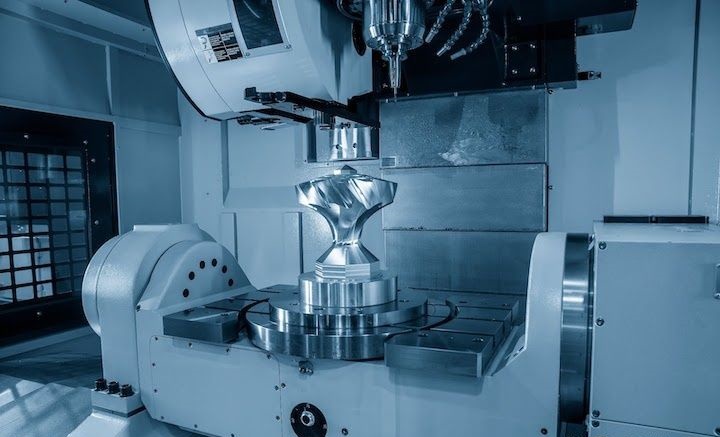
Now that we've explored the widespread applications of complex machined parts, let's shift our focus to the critical aspect of ensuring excellence through stringent quality standards and certifications.
Quality control is the bedrock of producing complex machined parts that meet and exceed industry expectations. Precision alone is not enough; adherence to specific quality standards is paramount to guaranteeing the functionality, safety, and longevity of these components. From initial design phases to the final inspection, every step is infused with quality considerations.
In the global landscape of manufacturing, adherence to international certification standards is non-negotiable. ISO 9001, the internationally recognized standard for quality management systems, serves as a guiding framework. Compliance with ISO 9001 ensures that the manufacturing processes for complex machined parts are consistently monitored, refined, and aligned with global quality benchmarks.
Traceability is a key element in ensuring the quality and integrity of complex machined parts. Rigorous documentation of materials, manufacturing processes, and inspection results allows for traceability throughout the component's lifecycle. This not only facilitates quality control but also serves as a crucial aspect of post-production analysis and continuous improvement.
Non-destructive testing methods play a pivotal role in quality assurance. Techniques such as ultrasonic testing, magnetic particle testing, and dye penetrant testing allow for the inspection of critical components without compromising their integrity. The integration of NDT methodologies ensures that even the most intricate flaws are detected and addressed before the components enter service.
The quest for quality extends beyond the manufacturing facility. Ensuring the quality of materials supplied by external sources is equally vital. Establishing robust supplier quality assurance mechanisms involves rigorous assessments, audits, and collaborative efforts to maintain a consistent standard of excellence throughout the entire supply chain.
A commitment to quality is synonymous with a commitment to continuous improvement. Creating a culture that encourages feedback, data analysis, and proactive refinement of processes ensures that the manufacturing of complex machined parts evolves in step with technological advancements and industry best practices.
In the intricate dance of quality control, adherence to international standards, meticulous traceability, advanced testing methodologies, and a relentless pursuit of continuous improvement collectively contribute to the assurance of excellence in complex machined parts.
Having navigated the realm of quality standards and certifications, let's now delve into the pivotal considerations of material selection and engineering design in the intricate world of complex machined parts.
The choice of materials is a cornerstone in the creation of complex machined parts. It's not merely about selecting a substance; it's a strategic decision influenced by factors such as mechanical properties, thermal resistance, and environmental considerations. In the aerospace industry, for instance, lightweight yet robust alloys like titanium are favored to optimize fuel efficiency without compromising structural integrity.
Alloys play a starring role in material selection. The quest for specific combinations of metals with enhanced properties—such as increased strength, corrosion resistance, or heat tolerance—defines the alloy alchemy in crafting these precision components. The synergy of metals is tailored to the demands of each application, ensuring the end product withstands the challenges of its intended environment.
Every industry has its unique demands, and material selection is finely tuned to meet these specific needs. In medical applications, biocompatible materials are imperative for components that interact with the human body. In the automotive sector, the focus may shift to materials that enhance crash resistance and longevity.
The design phase is where the blueprint for precision and performance is laid. Engineers navigate the intricate balance between form and function, considering factors such as stress distribution, load-bearing capacity, and the intricacies of the manufacturing process itself. Computer simulations and modeling play a crucial role in predicting how a design will behave under real-world conditions, allowing for adjustments and refinements before physical production begins.
The quest for efficiency extends beyond material strength. Engineering design is a playground for optimization—seeking the most efficient use of materials while minimizing waste, reducing production time, and enhancing overall performance. This optimization loop is iterative, with each design cycle refining the blueprint for precision and excellence.
In the modern era, the integration of advanced technologies, such as artificial intelligence (AI) and generative design algorithms, has revolutionized the material selection and engineering design process. These technologies analyze vast datasets, identifying optimal material combinations and design iterations that may not be immediately apparent through traditional methods.
As we immerse ourselves in the intricate dance of material science and engineering design, the precision and thoughtfulness behind each choice become apparent.
Stepping into the future of manufacturing precision, let's explore the dynamic landscape of industry trends and technological innovations shaping the world of complex machined parts.
The rise of Industry 4.0 brings forth the era of smart manufacturing, integrating the Internet of Things (IoT), data analytics, and automation into the production of complex machined parts. Smart machining centers equipped with sensors provide real-time data, allowing for predictive maintenance, improved efficiency, and enhanced overall quality.
As environmental consciousness grows, sustainability becomes a key trend in the manufacturing sector. The use of eco-friendly materials, energy-efficient machining processes, and the adoption of circular economy principles are emerging trends. Manufacturers are exploring ways to reduce waste, minimize environmental impact, and create components with a focus on long-term sustainability.
The advent of additive manufacturing—commonly known as 3D printing—transforms traditional machining landscapes. This innovative approach allows for the creation of intricate geometries and complex structures that were once challenging or impossible to produce. The marriage of subtractive and additive manufacturing techniques offers new possibilities in design flexibility, rapid prototyping, and customized solutions.
Surface treatments and coatings play a pivotal role in enhancing the performance and durability of machined parts. Innovations in coating technologies, such as advanced ceramics and diamond-like carbon (DLC) coatings, contribute to increased wear resistance, reduced friction, and improved overall functionality. These advancements are particularly crucial in demanding applications like aerospace and automotive industries.
The integration of robotics and collaborative automation optimizes manufacturing processes. Robotics take on tasks that require high precision and repetition, while human operators focus on intricate tasks that demand creativity and problem-solving skills. This collaboration results in enhanced efficiency, reduced lead times, and improved workplace safety.
The implementation of digital twin technology allows manufacturers to create virtual replicas of physical components. This technology facilitates real-time monitoring, performance analysis, and predictive maintenance. By leveraging digital twins, manufacturers gain insights into the behavior of complex machined parts throughout their lifecycle, enabling proactive decision-making and continuous improvement.
As manufacturing processes become increasingly digitized, the importance of cybersecurity cannot be overstated. Protecting intellectual property, sensitive data, and ensuring the secure operation of interconnected systems are paramount. Manufacturers are investing in robust cybersecurity measures to safeguard their processes and innovations.
As we navigate through these industry developments and technological innovations, it becomes clear that the landscape of complex machined parts is not static but evolving in response to advancements in technology, sustainability imperatives, and the changing demands of various industries.
Richconn has established itself as a strategic supplier, renowned for its commitment to delivering high-quality CNC machined parts. With years of experience in the industry, Richconn has consistently demonstrated expertise, reliability, and a dedication to meeting and exceeding client expectations.
Richconn Precision Manufacturing Co., Ltd. places a strong emphasis on quality management. The company undergoes regular and comprehensive audits and assessments to ensure compliance with international standards. This commitment to excellence extends to ethical practices, industry regulations, and consistent delivery of materials meeting specified quality standards.
Richconn is not just a precision machine shop; it is a collaborative partner in design and innovation. The company actively engages in collaborative efforts during the design phase, leveraging its expertise to optimize designs for manufacturability, cost-effectiveness, and overall efficiency. This collaborative approach contributes to the enhancement of the final product and strengthens the partnership between Richconn and its clients.
Richconn Precision Manufacturing adopts proactive risk management strategies, ensuring continuity in the face of unforeseen challenges. The company embraces lean manufacturing principles, contributing to streamlined processes, reduced waste, and increased overall efficiency. These practices align with the commitment to minimizing lead times and maintaining optimal production flow.
With a global perspective, Richconn has navigated diverse markets and resources. The company's expertise in managing a global supply chain ensures that clients benefit from access to a broad spectrum of capabilities while effectively addressing logistical complexities associated with a globalized manufacturing environment.
Richconn values transparent communication and maintains an open feedback loop with its clients. Regular updates on production schedules, changes in specifications, and a responsive approach to client feedback create a collaborative environment. This commitment to communication ensures agility and allows for quick adaptations to evolving requirements.
Richconn Precision Manufacturing Co., Ltd. stands out as a reliable and strategic CNC machining service provider. Their commitment to quality, collaborative approach, and global supply chain expertise make them a noteworthy partner in the intricate world of complex machined parts. Consider Richconn for your CNC machining needs, and elevate your manufacturing endeavors to new heights of precision and excellence.
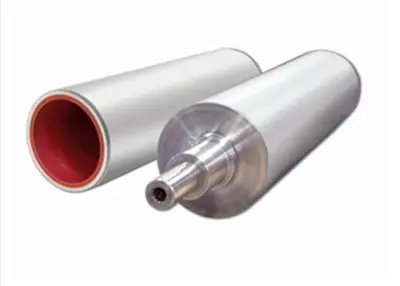 Everything About Roller - Materials, Processing, ProductsJune 15, 2023In this era of rapid change, mechanical equipment is developing rapidly, the degree of automation and intelligence in production is continuously improving, and the performance indicators of mechanical...view
Everything About Roller - Materials, Processing, ProductsJune 15, 2023In this era of rapid change, mechanical equipment is developing rapidly, the degree of automation and intelligence in production is continuously improving, and the performance indicators of mechanical...view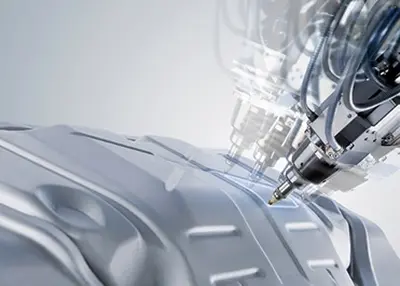 What is CNC Milling Machine: Definition, Uses, Types & PricesMarch 29, 2024Let's delve deeper into CNC milling machine, which holds significant importance for your project, and explore the mill machine in detail.view
What is CNC Milling Machine: Definition, Uses, Types & PricesMarch 29, 2024Let's delve deeper into CNC milling machine, which holds significant importance for your project, and explore the mill machine in detail.view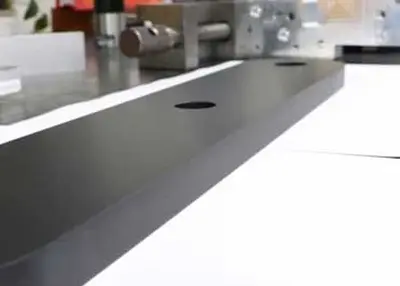 What Is Titanium Used for? (5 Common Uses)August 29, 2023Titanium has carved an impressive niche for itself within a myriad of industries and applications, all thanks to its extraordinary and unparalleled properties. The element of Titanium is symbolized by...view
What Is Titanium Used for? (5 Common Uses)August 29, 2023Titanium has carved an impressive niche for itself within a myriad of industries and applications, all thanks to its extraordinary and unparalleled properties. The element of Titanium is symbolized by...view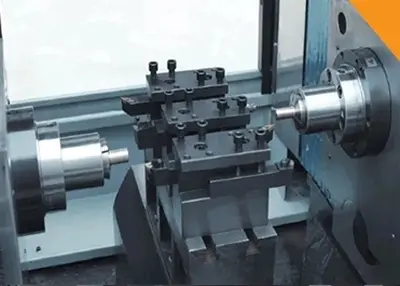 The Importance of Using CNC Processing for Medical Precision PartsDecember 30, 2022Medical device components are impacted by rising health costs and technological advancements brought about by the growing aging population. Medical equipment helps to improve the progress of basic med...view
The Importance of Using CNC Processing for Medical Precision PartsDecember 30, 2022Medical device components are impacted by rising health costs and technological advancements brought about by the growing aging population. Medical equipment helps to improve the progress of basic med...view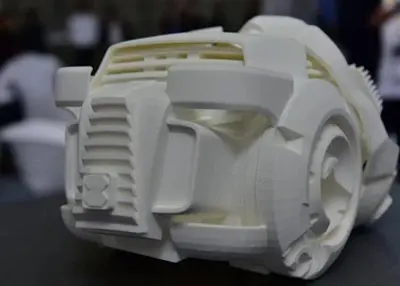 The Beginner's Guide to the 3D Printing ProcessMay 5, 2024This article explains what 3D printing is, the materials it uses, its advantages, processes and techniques, applications, and more. Read on and get the best custom 3D printing services.view
The Beginner's Guide to the 3D Printing ProcessMay 5, 2024This article explains what 3D printing is, the materials it uses, its advantages, processes and techniques, applications, and more. Read on and get the best custom 3D printing services.view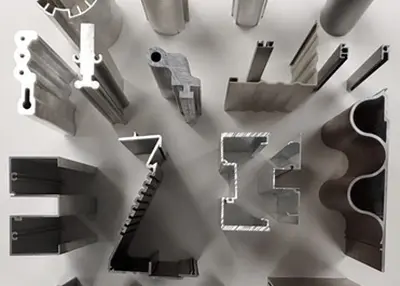 Metal CNC Machine: The Beginner’s Guide to Aluminum CNC MachineMarch 27, 2024Aluminum CNC machine is one of the most common types of metal CNC machines. Let’s have a look at its types, processes, applications and benefits.view
Metal CNC Machine: The Beginner’s Guide to Aluminum CNC MachineMarch 27, 2024Aluminum CNC machine is one of the most common types of metal CNC machines. Let’s have a look at its types, processes, applications and benefits.view